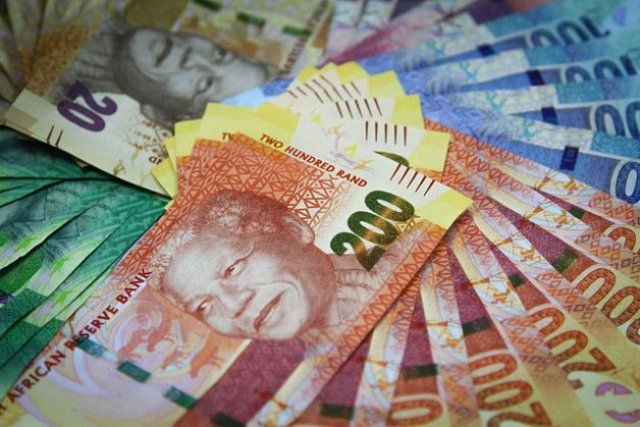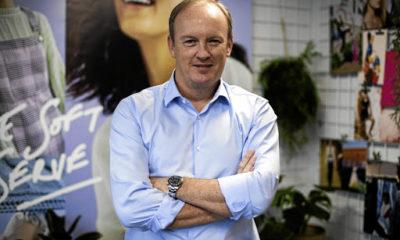Business
South African Salaries Take a Hammer Blow as Debt and Inflation Squeeze Households

For millions of South Africans, payday no longer feels like a relief. Instead, it has become a reminder of how quickly salaries are swallowed up by groceries, fuel, debt repayments, and school fees. Fresh data confirms what most households already know: salaries are not stretching as far as they used to and the gap is widening.
The Numbers Tell a Harsh Story
BankservAfrica’s real take-home pay index (BTPI) shows that real incomes, after adjusting for inflation, fell by 0.9% in July 2025. This follows a 4.6% slump in the second quarter, marking the fifth consecutive month of declines.
Between February and July alone, real incomes dropped by 7.1%, leaving July’s average monthly salary at R14,660, below December 2024’s level and not far from the lows of October last year.
Investec chief economist Annabel Bishop explains that the slide comes after a short-lived boost earlier in the year. “Incomes surged in January and February, but since March we’ve seen a steady erosion. The trend is deeply concerning for household consumption and the broader economy.”
Why Your Salary Feels Smaller
The culprit is familiar: inflation. Rising food and fuel prices since March have chipped away at spending power, while shifts in salary structures, more jobs at the lower end of the scale, fewer at the higher endhave also dragged the averages down.
And while nominal salaries (not adjusted for inflation) also dropped 1.1% in July, the pain is sharper when you look at the bigger picture: BankservAfrica notes that pay packets today buy 49% less than they did nine years ago.
That shrinking buying power is showing up in sales data too. Wholesale trade activity dropped by 2.8% and motor trade by 4.8% in the same period, evidence that households are cutting back on non-essentials.
Debt Is Eating the Paycheck
If salaries are under pressure, debt is making matters worse. According to DebtBusters, 95% of South Africans who applied for debt counselling in the second quarter carried at least one personal loan, while more than half had payday loans stacked on top.
Households now spend 70% of their income servicing debt, the highest share since 2017. For higher-income earners, the warning lights are flashing too. Those earning R35,000 or more are carrying unsecured debt levels nearly 80% higher than in 2016.
“Consumers are still experiencing severe financial stress, with income growth significantly behind expense growth,” Bishop warns. Even with recent rate cuts, the relief has been minimal.
Knock-On Effect: Retailers and Growth Prospects
Retailers are feeling the strain too. The Bureau for Economic Research (BER) reports retail confidence fell by 8% in the second quarter, with 58% of retailers dissatisfied with current trading conditions. Durable goods retailersparticularly in the hardware sector, have seen demand evaporate, while semi-durable retailers that started the year strong are also pulling back.
Without the temporary bump from two-pot retirement withdrawals, Bishop says sales would look even weaker. “Spending power is collapsing, and that will keep GDP growth subdued.”
Consensus forecasts put GDP growth at just 1% for 2025, with second-quarter growth scraping by at 0.5% quarter-on-quarter, thanks largely to agriculture. Strip that away, and the economy would likely be in contraction.
The Human Cost Behind the Data
Behind these numbers are households juggling multiple loans, parents skipping medical aid contributions to pay school fees, and young professionals sinking deeper into personal debt just to survive city life. On social media, the frustration is loud and raw:
-
“My salary feels like a donation to the bank before I even see it.”
-
“We’re running to stand still, what’s the point of working harder when everything costs double?”
The anger isn’t just about money. It’s about dignity and the sense that progress is slipping further out of reach, no matter how many side hustles or sacrifices people make.
Where Do We Go From Here?
South Africa’s economic story in 2025 is one of survival. With consumer spending accounting for more than half of GDP, the steady erosion of take-home pay is not just a household issueit’s a national one.
Until salaries rise meaningfully above inflation and debt levels ease, the country risks staying locked in a cycle where workers earn less in real terms each month, retailers lose confidence, and growth flatlines.
As Bishop puts it, “Income growth is simply not keeping pace with expenses. Without relief, financial stress will continue to define the lives of ordinary South Africans.”
And right now, that hammer blow is being felt at every till, every petrol station, and in every monthly debit order.
{Source: BusinessTech}
Follow Joburg ETC on Facebook, Twitter , TikTok and Instagram
For more News in Johannesburg, visit joburgetc.com



























